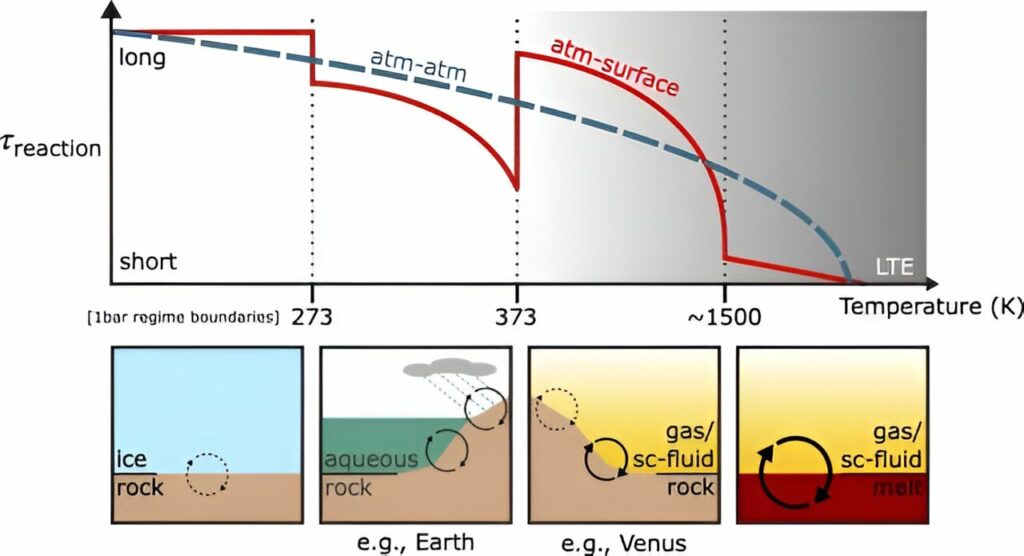Insights into an Exoplanet’s Surface Unveiled by its Atmospheric Composition
As astronomers accumulate data on planetary atmospheres, insights into their compositions and evolutionary processes emerge. While thick atmospheres prove more accessible for study, they also possess the ability to conceal a planet’s surface. For instance, a planet resembling Venus, characterized by a dense atmosphere, presents challenges in observing its terrain. The paradox arises where a comprehensive understanding of a planet’s atmosphere may inversely hinder our comprehension of its surface. However, a potential shift in this dynamic is anticipated with a recent study accepted for publication in the Monthly Notices of the Royal Astrophysical Society and accessible on the arXiv preprint server.

Rocky planets undergo a complex chemical exchange between their surfaces and atmospheres. On Earth, this dynamic process is characterized by cycles of rain and evaporation, seasonal changes affecting growth and harvest, and volcanic activities, contributing to an evolving atmospheric composition over extended periods.
Unlike a state of mutual equilibrium, Earth’s surface and atmosphere experience continuous transformations due to these prolonged exchanges. Venus, with its denser atmosphere and arid surface, witnesses a shorter timescale for such exchanges, yet one that remains insufficient for achieving equilibrium. This study posits that for warm Venus-like worlds boasting notably thick atmospheres, a chemical balance between the surface and the air can be attained.
These planets, commonly found in close proximity to small stars, present ideal candidates for atmospheric investigations. The research team demonstrated this phenomenon by simulating chemical interactions precisely at the interface between the atmosphere and the rocky surface. Their simulations revealed that chemical equilibrium, especially for simple molecules like carbon dioxide in Venus’s atmosphere, can serve as a means to explore the composition of its surface. Depending on the surface temperature, Venus-like exoplanets could exhibit robust interactions for more intricate molecules such as CaAl2Si2O8 and MgAl2O4.

In essence, given the appropriate conditions, small rocky planets situated in close proximity to their warm stars offer ideal prospects for this type of investigation. Insights gained from studying their atmospheres can provide a glimpse into the composition of their surfaces and potentially reveal details about their geological activity. It becomes conceivable to deduce the presence or absence of specific minerals on an exoplanet’s surface without the need for direct observation.
This type of data holds significant importance in advancing our understanding of the formation of terrestrial planets. Previous research has indicated the atypical nature of our solar system, with systems devoid of large planets in the inner region being uncommon. By comprehending the evolution and composition of inner planets in other star systems, we can unravel the reasons behind the uniqueness of our solar system. Moreover, this exploration may shed light on the prevalence or rarity of life similar to ours in the vast expanse of the universe.
This article is republished from PhysORG under a Creative Commons license. Read the original article.
Do not forget to share your opinion with us to provide you with the best posts !




0 Comments